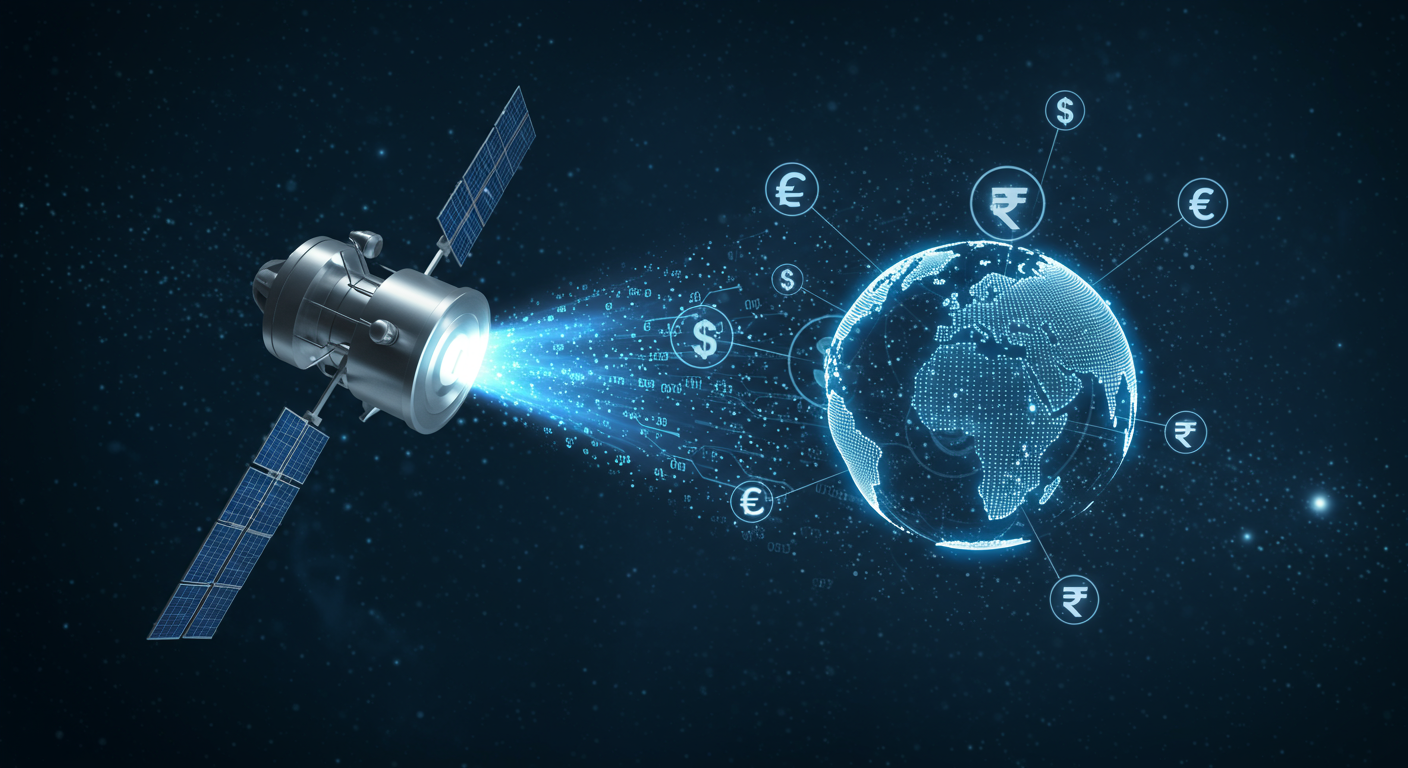When you gaze up at the night sky, thoughts of finance might be the furthest thing from your mind. Yet, the vast expanse of space and the cutting-edge technologies developed to explore it are increasingly intertwined with the complex world of global finance. From satellite imagery informing billion-dollar trades to space-based communication enabling financial inclusion, the final frontier is opening up new possibilities and challenges for investors, institutions, and fintech innovators. Understanding the role of Space Technology Global Finance is no longer science fiction; it's becoming a crucial aspect of navigating the modern financial landscape.
This article explores how space technology is actively impacting and reshaping global financial systems. We'll delve into the key applications, the opportunities they present, and the considerations for finance professionals and tech enthusiasts alike as this integration deepens. Get ready to see how technologies orbiting miles above Earth are influencing decisions right here on the ground.
Satellite Data: A Bird's-Eye View for Financial Decision-Making
One of the most significant impacts of space technology on finance comes from the vast amounts of data generated by satellites orbiting Earth. This isn't just about pretty pictures; it's about actionable intelligence derived from various sensors.
Types of Valuable Satellite Data:
- Optical Imagery: High-resolution images capturing visible light, used to monitor everything from construction activity and retail foot traffic (counting cars in parking lots) to agricultural yields and port congestion.
- Radar (SAR – Synthetic Aperture Radar): Capable of penetrating clouds and darkness, SAR provides data on infrastructure stability, oil storage levels (by measuring floating roof heights), and shipping movements regardless of weather conditions.
- GPS/GNSS: Precise location and timing data are fundamental for logistics, supply chain tracking, and even verifying transaction locations.
- Thermal Infrared: Detects heat signatures, useful for monitoring industrial activity, energy consumption, or even environmental factors like heat stress on crops.
- Atmospheric Data: Information on weather patterns, pollution levels (like NOx or CO2 emissions), and climate trends, crucial for commodity markets, insurance risk modelling, and ESG investing.
How Satellite Data Finance Drives Insights:
Financial analysts and quantitative hedge funds are increasingly leveraging this alternative data to gain an edge. Here’s how:
- Commodity Trading: Estimating crop yields weeks before official reports, tracking oil inventories globally, or monitoring mining activity provides predictive power for commodity prices.
- Supply Chain Monitoring: Observing vessel movements, port activity, and trucking logistics helps assess potential disruptions and gauge economic activity levels.
- Infrastructure & Real Estate: Tracking construction progress on large projects or monitoring urban expansion can inform investment decisions in related sectors.
- ESG Investing: Satellite data provides objective metrics for environmental factors like deforestation rates, water body health, and carbon emissions from specific facilities, aiding in sustainable investment analysis.
The ability to gather near real-time, objective data on a global scale offers transparency and predictive capabilities previously unavailable, fundamentally changing how certain market participants operate.
Connecting the Globe: Space Tech and Financial Inclusion
Billions of people worldwide still lack access to reliable internet connectivity, often hindering their participation in the formal financial system. Traditional terrestrial infrastructure (like fibre optic cables) can be prohibitively expensive or geographically challenging to deploy in remote or underserved regions.
This is where satellite communication networks, particularly Low Earth Orbit (LEO) constellations like SpaceX's Starlink or OneWeb, come into play. These networks promise to deliver high-speed, low-latency internet access globally.
Impact on Financial Services:
- Access to Digital Banking: Reliable internet allows individuals and small businesses in previously unconnected areas to access mobile banking apps, online payment systems, and other digital financial tools.
- Enabling
Fintech Innovation: A broader connected population creates larger addressable markets for fintech companies developing solutions tailored to emerging economies, fostering innovation in payments, micro-lending, and insurance. - Supporting Remote Operations: Financial institutions can potentially support remote branches or agents in areas lacking traditional infrastructure, expanding their reach.
By bridging the digital divide, space-based communication technology directly contributes to greater financial inclusion, empowering individuals and stimulating economic activity in new regions.
Orbiting Risk Management: Satellites in Insurance and Climate Assessment
The insurance industry and long-term investors are constantly evaluating and pricing risk, particularly risks associated with natural disasters and climate change. Space technology provides powerful tools for this assessment.
Applications in Risk Assessment:
- Natural Disaster Monitoring: Satellites provide early warnings and real-time tracking of hurricanes, wildfires, floods, and volcanic activity. Post-event imagery helps rapidly assess the extent of damage for claims processing and resource allocation.
- Agricultural Insurance: Monitoring weather patterns, soil moisture, and crop health via satellite helps insurers price crop insurance more accurately and verify claims related to drought or pests.
- Climate Change Modelling: Long-term satellite data on sea-level rise, ice melt, temperature changes, and atmospheric composition feeds into sophisticated climate models used by investors and insurers to understand long-term physical risks to assets and portfolios.
- Infrastructure Monitoring: Detecting subtle ground subsidence near critical infrastructure (pipelines, bridges, dams) via radar interferometry (InSAR) can flag potential risks before catastrophic failure occurs.
This enhanced ability to monitor, predict, and assess risk allows for more accurate insurance underwriting, faster claims payouts, and more resilient investment strategies in the face of environmental uncertainty.
Investing in the Final Frontier: The Space Economy
Beyond its applications for finance, the space sector itself represents a burgeoning investment landscape. Driven by falling launch costs, technological advancements, and increasing private sector participation, the "space economy" encompasses a range of industries.
Key Investment Areas:
- Satellite Manufacturing & Launch Services: Companies designing, building, and launching satellites.
- Ground Stations & Communication: Infrastructure required to communicate with and control satellites.
- Data Analytics Providers: Companies specializing in processing and interpreting satellite data for various industries, including finance.
- Space Tourism & Exploration: Longer-term opportunities in human spaceflight and resource utilization.
While still an emerging field with unique risks, the potential for growth is attracting significant interest from venture capital and institutional investors. (For more insights into investing in cutting-edge sectors, see our guide on Investing in Emerging Technologies like AI, IoT, and Robotics).
Key Considerations and the Future Outlook for Space Technology Global Finance
While the potential is vast, integrating space technology into finance isn't without challenges:
- Data Costs & Accessibility: Acquiring and processing specialized satellite data can still be expensive.
- Analytical Expertise: Extracting meaningful financial signals from raw satellite data requires sophisticated analytical capabilities (often involving AI/ML).
- Data Privacy & Security: Concerns exist around the use of satellite surveillance and the security of space-based communication networks.
- Regulation: The regulatory landscape for space activities and the use of satellite data is still evolving globally.
Despite these hurdles, the trajectory is clear. We can expect continued advancements in satellite capabilities (higher resolution, more frequent revisits, new sensor types), further integration with AI for automated analysis, and potentially even the development of dedicated space-based infrastructure for ultra-secure financial transactions. The synergy between Space Technology Global Finance will only grow stronger.
Disclaimer: The information provided in this article is for general informational purposes only and does not constitute professional tax advice. Tax laws are subject to change. Please consult with a qualified tax advisor for advice tailored to your specific situation.
The intersection of space technology and global finance is a rapidly evolving frontier, offering unprecedented insights and opportunities. Staying informed about these developments is key for forward-thinking finance professionals, investors, and tech enthusiasts.
Want to stay ahead of the curve on how technology is shaping finance and tax? Subscribe to the InsightsOnTax newsletter for regular updates, expert analysis, and practical guidance delivered straight to your inbox.



